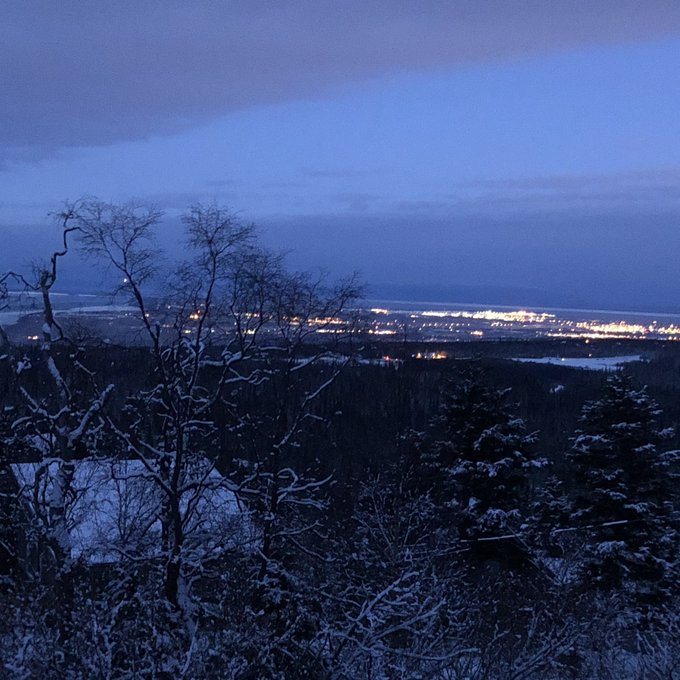Now that Thanksgiving has passed, families who decorate for Christmas might be thinking about selecting that perfect live tree for their homes.
If you are choosing the real thing this year, here are some tips to keep your Christmas tree as healthy as possible this holiday season.
1. Remember the tree is a live organism
Two simple things to keep in mind when you are preparing your tree for the indoors: Ask for a fresh cut on the trunk and make sure the tree gets water right away.

Make sure you know how much space you have to display your real Christmas tree. Looks may be deceiving at the retail lot or tree farm and you could end up with a tree that is way too big for your room. (iStock/Thinkstock/arinahabich)
Hugh Whaley, spokesperson with the National Christmas Tree Association, told AccuWeather most species can be without water for six to eight hours before dried sap forms a seal over the trunk, making it much harder, if not impossible, for water to absorb. He recommends a quick turnaround to keep the tree viable.
“Even if you are not going to decorate it right away… just come home, put it in a bucket of water and lean it up upright either outside or in the garage,” Whaley said. “Keep it moist during the entire season.”
2. Plain, fresh water is key
If you want your tree to be its best and brightest for Christmas Day and beyond, experts say the simplest solution is to feed your tree with water in a tree stand.
Whaley said you should check water levels twice a day – when you get up and when you go to bed – to get an idea how fast the tree is absorbing water.
While some people swear by a sugar solution or purchasing a tree preservative, tree growers said additives don’t necessarily make an noticeable difference.
Also, the temperature of the water doesn’t matter and drilling a hole in the base of the trunk does not improve water uptake, according to the National Christmas Tree Association.
RELATED:
8 expert tips for safely chopping down your own Christmas tree
How to pick the perfect Christmas tree for your home
Real Christmas trees are better for the environment, experts say
Avoid a tragedy this holiday season: 7 tips for preventing a Christmas tree-related fire
8 expert tips for safely chopping down your own Christmas tree
How to pick the perfect Christmas tree for your home
Real Christmas trees are better for the environment, experts say
Avoid a tragedy this holiday season: 7 tips for preventing a Christmas tree-related fire
3. Needles don't have to be all over your house
Different species of trees will react differently to coming indoors, according to Doug Leies, a tree grower with a family farm in the Pocono Mountains of Pennsylvania.
He said firs are generally better than spruces in this regard. Ask the retailer to shake the dead needles from the tree before taking it home.
You can also buy a tree removal bag that acts as a tree skirt. When you’re ready to take the tree down, raise the bag from bottom to top and capture the needles inside.
4. Picking the best tree depends on a variety of factors
Of course, the best type of tree is subject to interpretation but it can also be based on your geographic area. Our experts personally enjoy Fraser and White (Concolor) Firs, but that doesn’t mean you can’t go for a Blue Spruce or a Scotch Pine.
A certain variety may be more popular in your area because of the growing conditions nearby.
You’re most likely to get the largest selection immediately after Thanksgiving.
However, Leies said the best time to make your pick is when you have time to enjoy the full experience.
“This is meant to be fun, after all," he said.
5. Remove your tree in an environmentally-friendly way
The Purdue University Cooperative Extension Service says you can facilitate the process of removing your Christmas tree by doing the following:
· Let the water dry out in the tree stand.
· Contain debris and needles.
· Cut tree into smaller parts (for larger trees).
Trees are often recycled into mulch but can also be used as soil erosion barriers or feeding areas for fish or birds. Check your local laws to see what is permissible in your area.





 for Alaska. Our family is intact - house is not... I imagine that’s the case for many, many others. So thankful to be safe; praying for our state following the earthquake.
for Alaska. Our family is intact - house is not... I imagine that’s the case for many, many others. So thankful to be safe; praying for our state following the earthquake.




